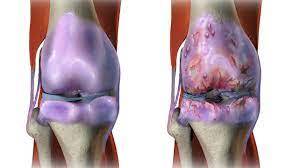
Experiencing pain in the knees is a common complaint we hear in our desi households filled with our grandparents. As a medical student, I can confirm it is a very well-heard sentence in a clinical setting; you can easily spot an elderly person with decreased mobility and increased knee pain and point it out as Osteoarthritis. This disease might start as simple as knee pain but later it can progressively get worse and cause pain in your back and other important joints.
While knee pain can stem from various causes, Zigang Ge in 2006 wrote a paper for the American College of Rheumatology coined Osteoarthritis (OA) as the leading cause of disability in elderly, affecting 10% of the population 60 years of age. A recently published 2024, significant findings emerged among 294 [both men and women] Pakistani OA patients in Buner (KP), highlighted that the 50 to 60-year age group was the most affected by knee pain.
Let us answer the ‘why me’ question. Risk factors of OA can be divided into a] person-level factors that are; age, female gender, obesity, genetic predisposition, lack of physical activity and diet and b] joint-level factors; injury, malalignment and abnormal loading of the joints.
Women of menopausal age become prone to this due to hormonal changes. A previous knee injury or smoking may also play a role in OA in men. A diet of high cholesterol, lacking good fibrous nutrients, especially deficient vitamin D and C and increased weight in both genders seems to cause knee issues. Hence, the leading cause being a sedentary lifestyle with poor dietary choices.
Once diagnosed, there is the ‘now what’ question? You will find painkillers as your first aid. If that does not work then it's recommended to get Hyaluronic Acid knee injections that cost almost PKR 2,000 per injection. If this medical therapy also fails some people try laser therapy for approximately PKR 4,000 although it can vary depending on the number of sessions needed and lastly if all fails, an invasive surgery should work such as a knee joint replacement, that can cost up to PKR 4 to 6 lakh.
An alternative method that has shown effectiveness for multiple patients is focusing on weight loss and strengthening leg muscles during the early stages of the disease. It's important not to overexert yourself to the point where you're unable to move the next day. Design a personalised workout routine to be performed five times a week, dividing it into two main parts: weight loss and muscle building.
For the weight loss component, if you're unable to access a gym, consider walking in your nearest park for at least twenty minutes without breaks. This simple yet effective activity can be done regularly to promote weight loss.
As for muscle strength, I would recommend seeking guidance from a physiotherapist. However, if that's not feasible, YouTube offers a plethora of resources. A few leg exercises that are recommended for building strength in OA include dynamic quadriceps (knee extension), sitting or standing leg march (knee flexion), clam shells, quad sets, leg raises against the wall or while lying down, heel raises, and the bridge exercise. Incorporating these exercises into your routine for about twenty minutes each session can yield significant improvements within just two weeks. And the best part is, it doesn't require any additional expenditure.
Combining these exercises with weight loss and a well-balanced diet can yield optimal outcomes for managing OA at any age and stage of the disease. These lifestyle modifications offer a holistic approach to managing OA, promoting overall health and well-being.
For young individuals who may come across this information by chance, I strongly recommend incorporating strength training into your routine, regardless of gender. This proactive approach can significantly reduce the risk of developing osteoarthritis (OA) later in life. Remember, prevention is often the most effective treatment for all diseases.
Without a doubt, OA is a pretty common and serious issue with only increasing prevalence in developing countries especially ours. But fear not because this terrifying and disabling disease does seem to improve with a little assistance and guidance from your local doctors.
A golden rule is to maintain a healthy lifestyle is to remember that the ‘NORMAL LEVEL OF PAIN IS ZERO’. It's common in our households to overlook minor discomfort until it escalates into a major problem. Let's remember the timeless wisdom of the idiom, 'A stitch in time saves nine.' So if you experience recurring episodes of pain anywhere, do not hesitate to seek help from your nearest doctor promptly.

